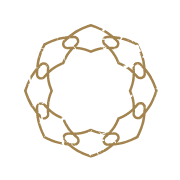Revel in Rotation
WHY WE IMPLEMENT ROTATION INTO OUR PROGRAMMING
A huge portion of my program design is dedicated rotational training. As soon as my clients are able to control their bodies in sagittal and frontal planes and then do the same with resistance, I begin to incorporate different forms of rotational exercises. As they progress, these exercises become more and more complex and spiral in nature. This month, I have included some pretty advanced rotational exercises in our programming so this blog is a timely addition. Understanding why we are doing something is for me a great tool in understanding how to do something.
Rotational exercises look almost like gimmicks, like there is no true functionality. When you consider the amount of weight that can be lifted with squats and deadlifts, what's the point in twisting around the floor with a light weight like a drunk ballet dancer?
The truth is that as humans we owe a lot, if not all of our upright two legged posture, to rotation. No other vertebrate is capable of the complex movements which humans possess. To be able to twist around a vertical axis while rotating the head independently is a unique attribute that allows us to do all of the amazing things that human’s can. The simple act of walking, which we take for granted, is grounded in the ability to rotate. The balance, sequencing and timing involved in walking is an expression of the symmetry of global right/left rotation.
This all comes from the fascial make up of the human body. The trunk is the most obvious place to view these spirals, with two very distinct ‘fascial slings’ crossing the midline. To the back you have the Posterior Oblique Sling, which amongst others connects the Glutes to the Lats on the opposite side of the midline through what is known as the Thoracolumbar fascia. On the front there is the Anterior Oblique Sling which links the External Oblique to the opposite Internal Obliques and down into the Adductor muscles. These are patterns that you will hear me say in class in all the time.
The picture displays how these spirals or slings are organized:
However, as we age and limit our movements we may become bound in certain patterns that may limit our rotational ability. An example of this would be excessive lumbar (lower back) rotation due to the loss of upper back mobility. Another one might be excessive knee valgus due to the loss of hip rotation. To put this into a clear picture have a look an all too common picture of two runners.
On the right is a visual representation of the pattern I just explained. Lumbar extension and knee valgus. On closer examination she has very limited trunk rotation. The only options she has to stay up right is with the compensations that she exhibits. However, the runner on the left does not have that that issue. Why?….She has rotated through the trunk to bring her center of mass over her base of support. That’s balance.
To see why this matters, watch this fascinating break down of sprinting mechanics by Michael Johnson
You might think what do I care, I am not an Olympic sprinter looking to shave milliseconds off a 100m time. Nope, you may not be, but maybe you like to run recreationally or maybe you live on Park Terrace East and have to climb the 215th street stairs everyday. The point is high performers and people going about their business have similar goals. To do it more efficiently and to stay in the game long term. That is why this crap matters for everyone!
Understanding how to use rotation to orientate your center of mass over your base of support will save you countless days of aches and pains. End of story.
SO YOU HAVE THE WHY, NOW TO GIVE YOU THE HOW.
We categorize our rotational training into 3 levels. Within each level there are both rotational and anti-rotational exercises.
Level 1 is about learning to limit rotation. An example of this would be a pallof press:
Level 2 we teach how to rotate the trunk independently of the pelvis. For a lot of these drills we put clients in half or full kneeling positions so that we can really draw attention to the movement of the pelvis.
Level 3 sees clients move their feet which generally involves rotating through more than one joint. At this point it becomes much harder to feel the pelvis. The below exercise is a fantastic movement to train that Anterior Oblique System we spoke of earlier.
Level 4 is also mainly done on the feet, but the difference is that movements are continuous in nature -- there is no end point. So the clients must have excellent internal timing and sequencing ratios between all of the joints involved. The exercises used are very complex, but provide for extremely beneficial core training. An entry exercise here would be a Clubbell Side Swing and or Clean.
Hope this helps you guys as always, any questions. Just ask!



